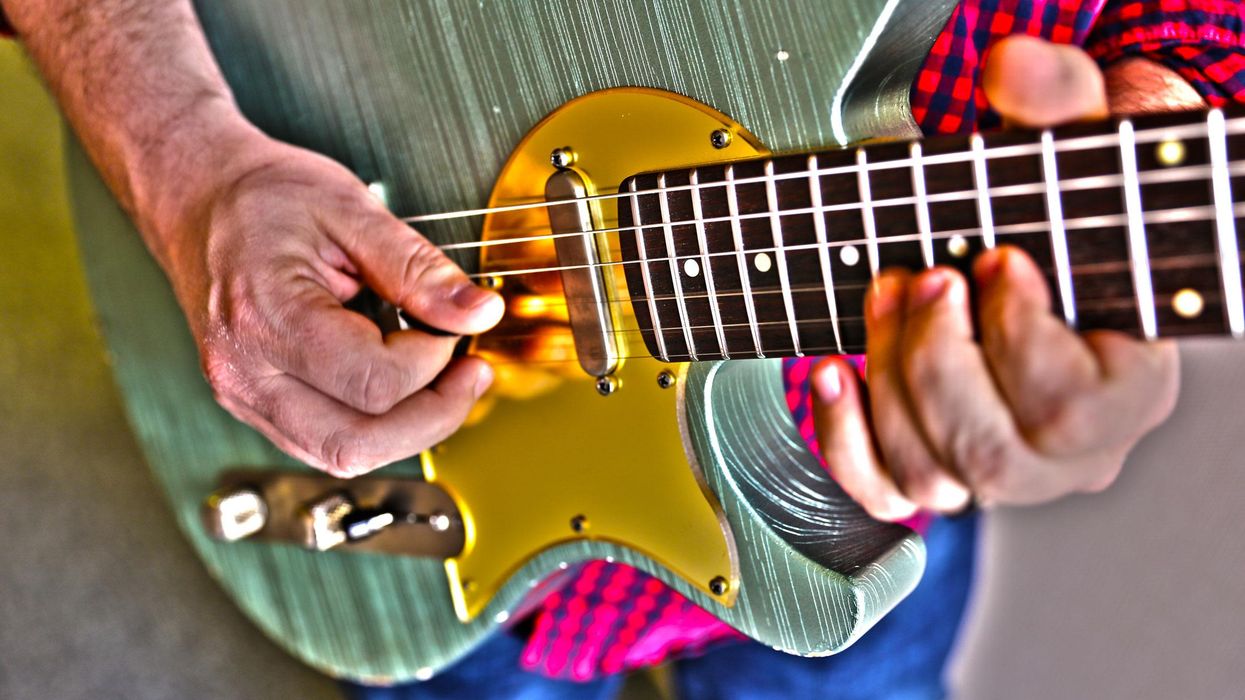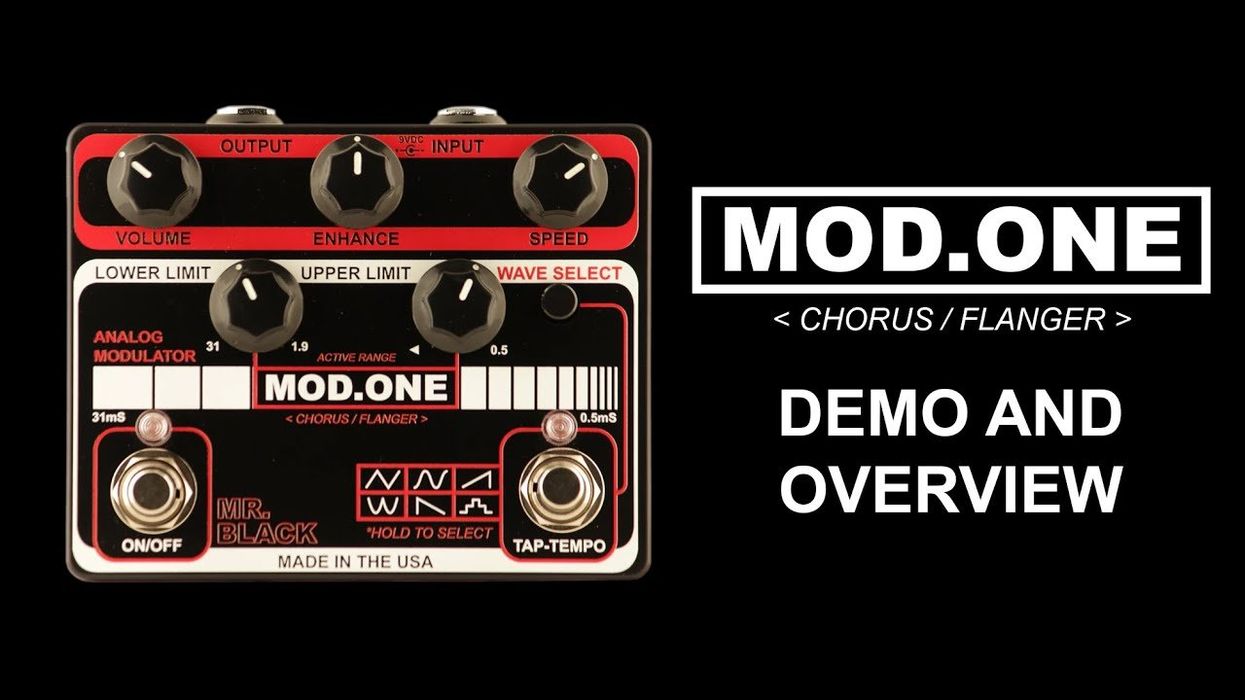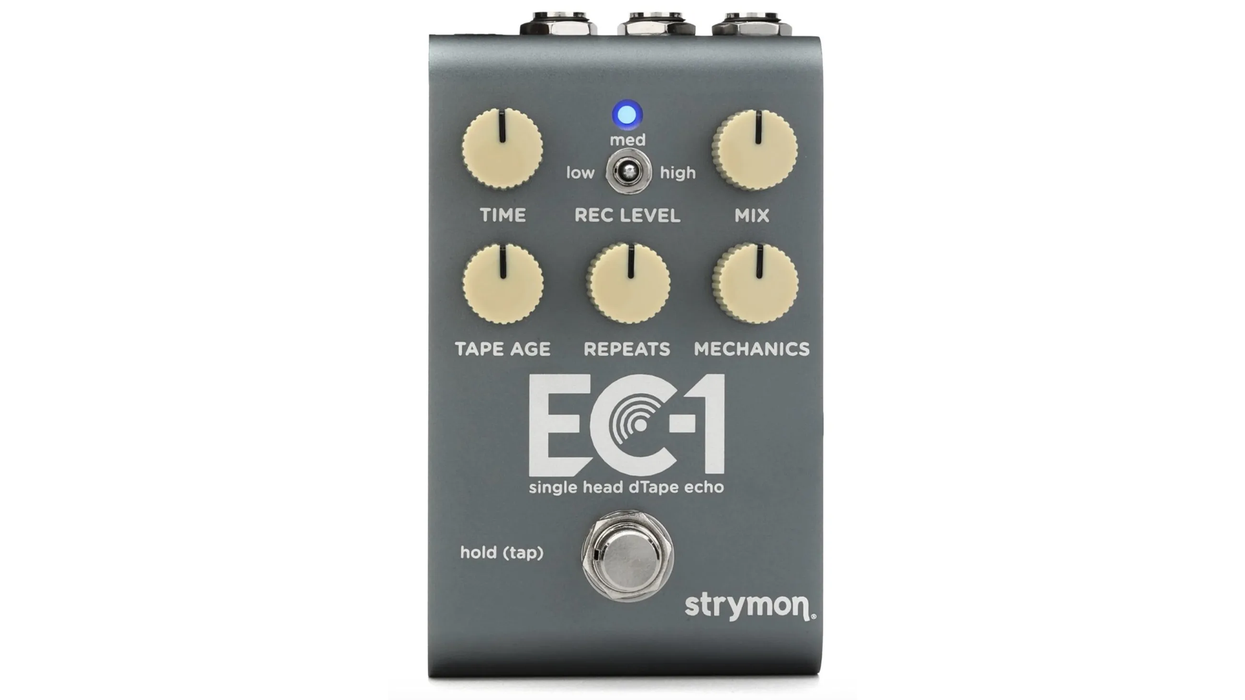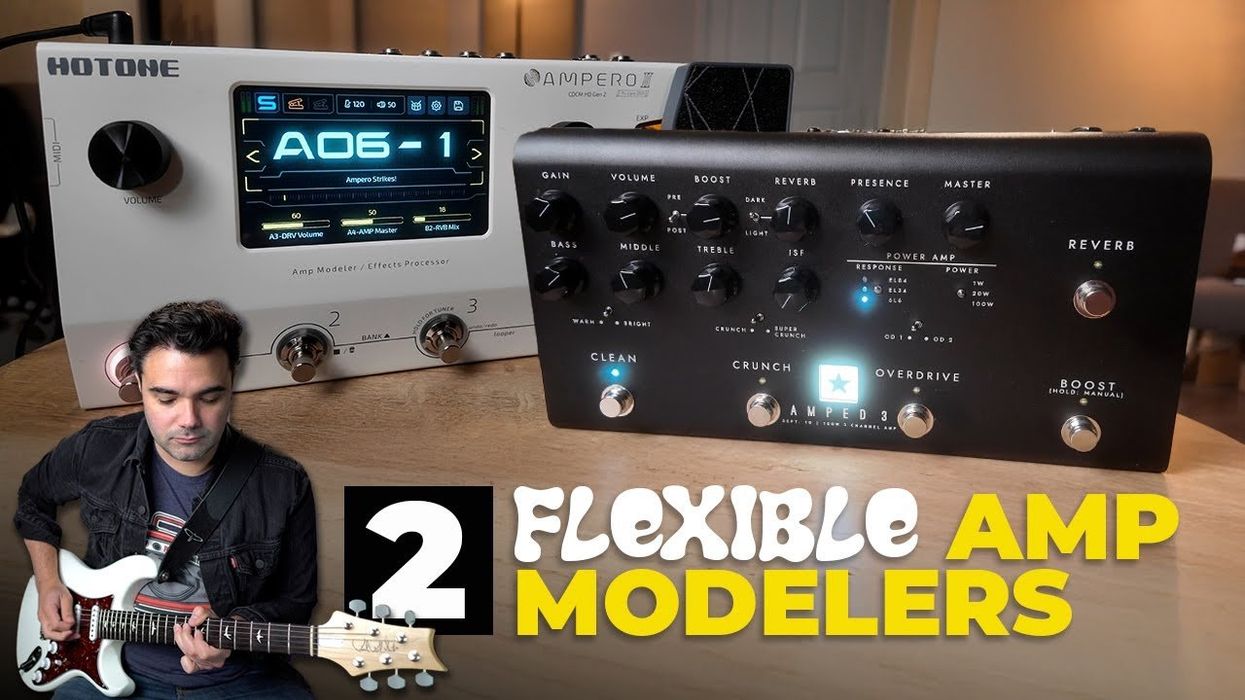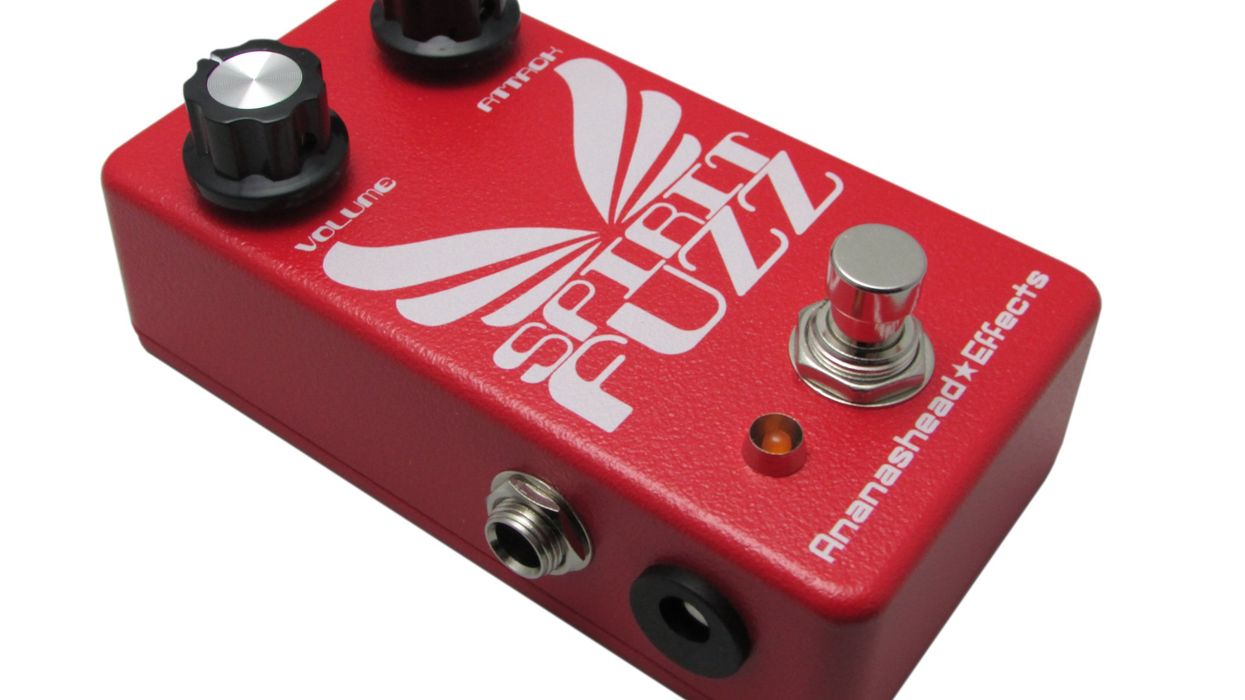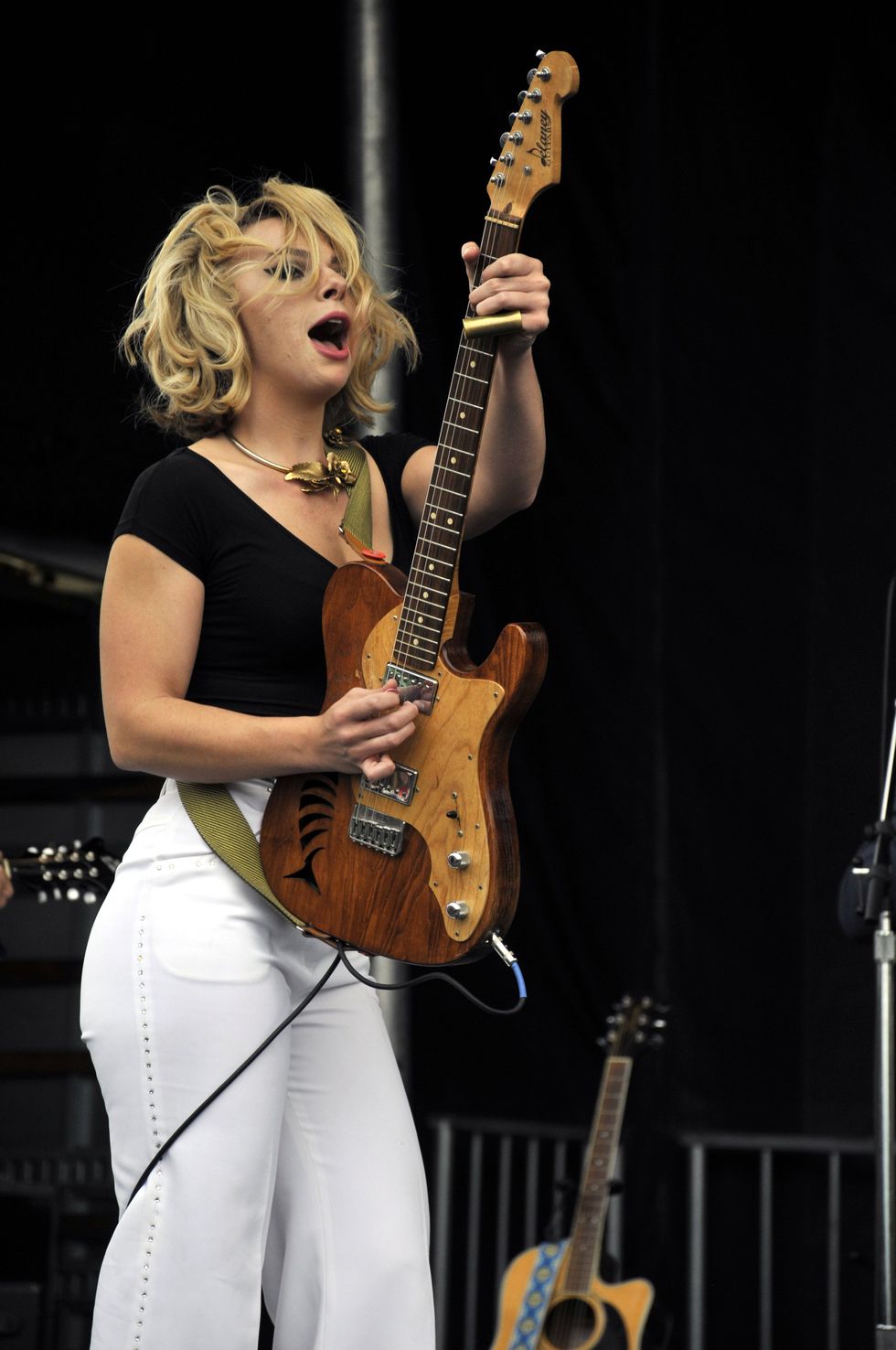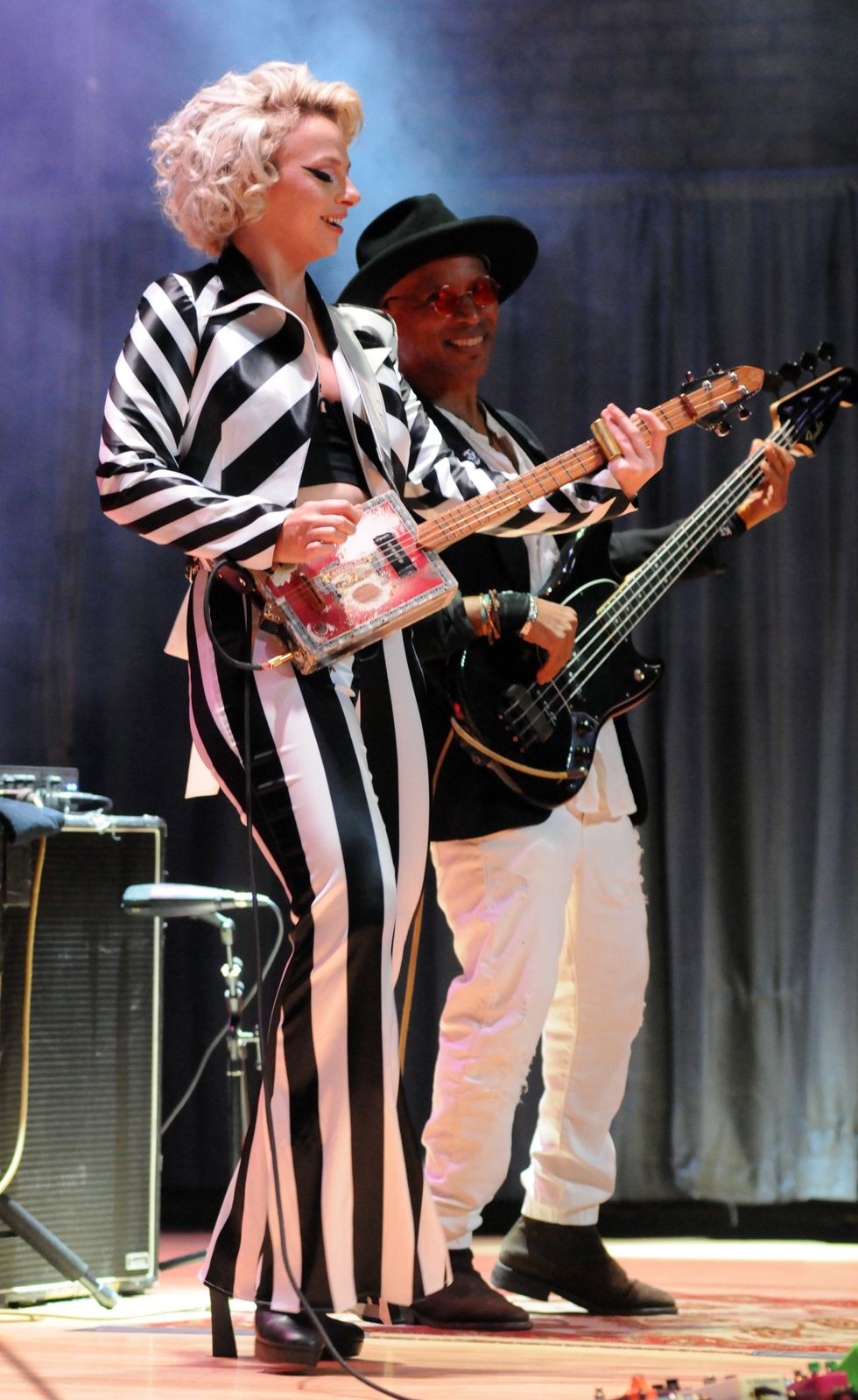Chops: Beginner
Theory: Intermediate
Lesson Overview:
• Learn how to embellish basic triads.
• Create rhythmically interesting grooves with simple harmonies.
• Understand the “Carlos Santana Secret Chord Progression.”
Click here to download a printable PDF of this lesson's notation.
In this lesson we’ll be exploring the idea of the two-chord jam, specifically a Dorian jam, using the chords Am and D. If this jam sounds familiar, it should. Dorian is the sound Santana used in “Evil Ways” and “Oye Como Va.” Even Frank Zappa used it in the aptly titled composition, “Variations on the Carlos Santana Secret Chord Progression.” As you’ll see in Ex. 1, we’re only using two different chords, Am and D, but we’re playing them in a variety of positions, thus expanding our two-chord jam beyond two chord shapes.
Click here for Ex. 1
Throughout this lesson I’ve used a Santana-inspired, pseudo-Latin groove for the rhythm section, but feel free to incorporate any rhythmic variations you’d like. As you’ll notice, I play the first eight measures with the same rhythm, and then when repeating the chords I start to improvise. This is vital when it comes to a jam—you have to mix up your rhythm, otherwise it will get old quickly. One caveat: I’ve varied my rhythm in these examples more frequently than I really would in a jam. So even though it’s good to mix it up, you want to find the right balance between locking in a groove and exploring alternatives.
All that said, it’s not the rhythm that makes this jam Dorian, it’s the chords. Let’s investigate why that is.
The Am and D chords in this jam are actually the ii and V chords in the key of G. Here are all the diatonic (“of the scale”) chords in G.
| G | Am | Bm | C | D | Em | F#m7b5 |
| I | ii | iii | IV | V | vi | vii |
By restricting our harmony—and most importantly, our bass line—to Am and D, we ground ourselves in A Dorian (A–B–C–D–E–F#–G), rather than G major, even though the scales have the same notes. (If that’s confusing, don’t worry about it for the sake of this lesson. Modes tend to confuse people. For now just take it on faith.)
Our next step in expanding this two-chord jam is to add some extensions. The Am (A–C–E) and D (D–F#–A) chords are triads. By adding different notes to the triads we can bring more color and variety into our jam. The most common addition to any triad is the 7, so here we get Am7 and D7 (Ex. 2).
Click here for Ex. 2
In Ex. 3 we take this idea even further by adding the 9, thus creating Am9 and D9.
Click here for Ex. 3
As you can see by now, one quick and easy way to vary any chord progression without radically altering its essence is to simply move its chords around the neck and add a few basic extensions.
Finally, Ex. 4 gets a little more abstract. Rather than restricting ourselves to fixed chords, we have an assortment of three-note voicings that hint at the chord progression (the bass is keeping us grounded) and bring a mixture of tonal colors to the jam. We’ve also started to vary the rhythm even more by playing arpeggios. All these voicings, even the ones with dissonances, are diatonic. This means as unusual as some of these chords might sound, we’re not using any notes from outside the key.
Click here for Ex. 4
Here’s a general rule I like to suggest for rhythm guitar: For every chord you play, learn it in at least two, if not three, positions. Then add a couple of extensions, starting with the 7. Not only will this help make a two-chord jam more interesting, it will expand your knowledge of both the fretboard and music in general.


